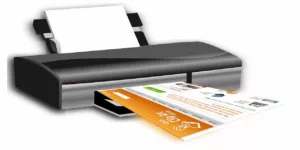I’m at HP Inc.’s Power of Print 2020 event this week, and there are several interesting takeaways from the event. One is that print isn’t in decline, not really. The numbers folks indicate that while older generations did cut back on printing, Millennials are printing more than their predecessors, which should result in market growth over the long term as these Millennials continue to become the dominant age group. Second, subscriptions in print and paper are trending to become the dominant form of printing materials purchases suggesting that, at some point, the hardware and the materials will eventually be part of a subscription. And, third, the fastest-growing component of HP Inc.’s printer business is its Smartphone app that showcases that against the shortcomings of the relatively small Smartphone screen, the full opportunity for printing from Smartphones has yet to be achieved.
Let’s talk about that this week.
Millennials Like To Print!
I thought this was interesting that Millennials print around half again as much as older generations do. What was also interesting was where they printed, a significant number of them print at work but not at home. This behavior suggests there is a lot of office printing that has little to do with work. This potential exposure suggests that implementing a policy that includes printer management could significantly curtail unauthorized use of printers and that kids coming into the workforce may not understand that company resources aren’t part of their compensation package.
I’ll bet that using the company printers for personal use isn’t the only thing that these new employees are likely to be taking advantage of. Now when I’ve run into this in the past, I used to be an Internal Auditor for IBM. This problem often has to do with ineffective employee onboarding. HP, at this event, is making a big deal about how unsecured printers are a huge exposure, and they are announcing a managed security service to address this. They are also the only vendor with run-time intrusion protection.
Now we can’t determine how much of this is truly personal and how much are just folks needing to print something for work but not wanting a printer in their homes, but the trend suggests there is significant printing upside as these Millennials age into the workforce and an opportunity for a printing service that could identify and address this generation’s unique needs.
Printer Subscriptions
Talking about services, one of the most successful HP Printing efforts is their printing subscription effort, where supplies are automatically ordered and arrive before they are needed. People particularly don’t want to deal with cartridges, and Millennials significantly prefer product approaches that reduce waste and are more environmentally friendly.
HP Inc.’s aggressive efforts to reduce waste, focus on responsible sourcing for paper, and aggressive support for the World Wildlife Fund, have allowed the company to be recognized as one of the leading US firms focusing on protecting the environment. I think there are two big reasons these subscriptions are successful. First, you never have to worry about being out of ink when you need to print, and second, it makes being green simple and easy, and a lot of us of all ages want to do what we can for the environment.
HP Inc. Print App
With 100% year over year growth, the HP Smartphone app is one of the most successful utilities the company provides. What I think is interesting about this is it suggests that even though large groups of people are living off their Smartphones, they are just now coming around to the idea that it is handy to be able to print from them. I know that in my case, I often get documents to review on my Smartphone or tablet and then have to find a PC and printer to do a proper review of them (or even read them if they are a legal document given the formatting).
While I think this should be something built into Smartphone operating systems, until that happens, the HP app’s lack of a driver requirement (drivers are problematic given the number of operating system versions currently in use) makes it a potential game-changer.
Wrapping Up: Printing Is Alive, Well, And Undervalued
What is interesting to me is how many people, including me at times, have thought printing was dead. But HP Inc.’s volumes suggest that while the market isn’t growing, it isn’t shrinking either, and changing usage models suggest there is as yet unmet upside for those coming into the market and those that increasingly live off of their Smartphones.
We are often so focused on the digital world; we forget much of what we still see is analog. Printing is not only still a viable business; it is massively profitable and steady. This profitability suggests that printing is alive, well, and that we likely are undervaluing its importance.








